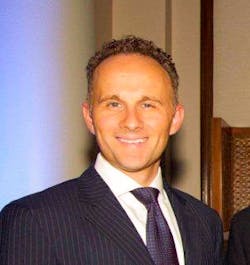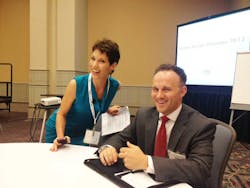Online Exclusive: A public policy lesson for plumbing, hydronic contractors
Record-low approval ratings, stalemate, can’t agree, won’t compromise — these are just a few of the terms that arise when talking about our policymakers in Washington.
It is true that when you turn on the television, read the paper or listen to the radio, the overarching themes resonate: the problems, lack of civility and inability to accomplish anything in the halls of Congress.
However, Congress actually does pass bills, and some are even signed by the president, with no fanfare or media coverage. At the same time, federal agencies, which can have an even greater reach, still regulate behind the quiet curtain of the rulemaking process.
It is through efforts such as these policy committees that the industry can find a unified and powerful voice to influencing public policy.
These committees will not only work on developing advocacy papers, positions and responses to legislation and regulation, but also solidifying themselves as the industry authorities before the key government officials.
The building and construction industry is continually faced with a barrage of laws, requirements and regulations that can greatly hurt — but also sometimes benefit — the industry. More and more organizations see the threat and potential opportunity, and have become proactive in public policy. They have the foresight and strategic goals of influencing public policy, rather than simply being told what to do.
Join these advocacy efforts
Two of these organizations are the Radiant Professionals Alliance (RPA) and American Society of Sanitary Engineering (ASSE). Both organizations recently created public policy committees to engage and interact with various policymaking bodies to protect, respond and advocate for the issues facing the radiant and hydronics industry.
The respective organizations’ boards of directors have voted to create such committees.
The issues facing these two organizations are endless; on both the federal and state levels, they encounter a daunting amount of requirements affecting their businesses success.
For example, ASSE’s manufacturers (and many other organizations) face a daunting federal law with very little codified interpretation or compliance guidance.
In January 2011, Congress passed, and President Obama signed, the “Reduction of Lead in Drinking Water Act,” which becomes the law of the land Jan. 4, 2014.
This law, which closely mirrors the lead laws in California, Louisiana, Maryland and Vermont, sets maximum lead levels for potable water applications. With such a far-reaching law, many across the country have questions and concerns on the definitions of the law, terms outlined and the testing of the products, to name just a few.
Just a few months prior to the law’s effective date, the Environmental Protection Agency (EPA) issued an informal, non-binding Frequently Asked Questions document rather than official federal regulations.
For the RPA, several policy issues have arisen, but an important incentive driving the success of technologies within this industry remains in question. The Solar Investment Tax Credit (ITC) is in limbo. Creating by the Energy Policy Act of 2005, the ITC remains one of the principal drivers for the solar industry, among others.
While the ITC provides a 30% tax credit for solar equipment, it also provides a 10% credit for geothermal systems and a 10% credit for combined heat and power systems. Without these credits, many technologies will see a major hit in demand, adoption and sales.
Some of these technologies include solar water heat, solar thermal electric, solar thermal process heat, geothermal electric, geothermal heat pumps and geothermal direct-use. As it now stands, the ITC is set to expire toward the end of 2016.
This may seem like it’s a long time away, but with only three years remaining and the future existence of the ITC in question, businesses are unable to make long-term plans with any certainty.
As you can see, there is no shortage of issues facing the industry. This is why being involved and having a voice in the process will greatly aid and drive the industry’s success.
I would encourage you to join these advocacy efforts, lend your expertise and knowledge for the betterment of the entire industry, which in turn will help your individual companies succeed.
Dain M. Hansen is the IAPMO Group's chief lobbyist and runs the Washington D.C. office. He formerly lobbied on behalf the Nation's largest electrical manufacturers and prior to that served as a Senior Policy Advisor on Capitol Hill to Members of Congress. Dain was recently appointed as co-chair the High-Performance Buildings Congressional Caucus Coalition.


